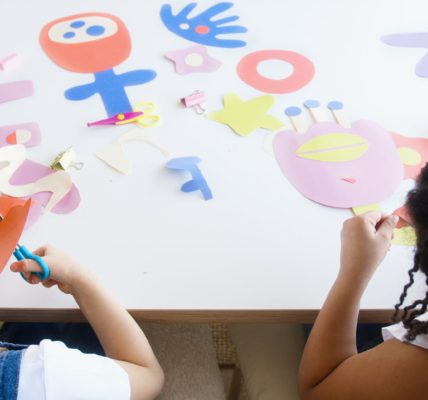Understanding Memory Care
When it comes to caring for seniors with memory impairments, such as dementia or Alzheimer’s disease, memory care plays a vital role in enhancing their quality of life. Memory care focuses on providing specialized support and assistance to individuals with memory loss and cognitive decline. In this section, we will explore what memory care entails and highlight the importance of engaging activities in this context.
What is Memory Care?
Memory care refers to a specialized form of care designed to meet the unique needs of individuals with memory disorders. It is often provided in dedicated memory care facilities or communities, where staff members are trained to provide personalized care and support. Memory care services aim to create a safe and supportive environment that promotes the well-being and independence of individuals with memory loss.
Memory care includes assistance with daily activities, medication management, and personal care, along with tailored programs and activities that stimulate cognitive function and promote emotional well-being. The primary goal of memory care is to enhance the overall quality of life for individuals with memory impairments while providing a secure and nurturing environment. To find memory care facilities near you, check out our article on memory care near me.
The Importance of Engaging Activities
Engaging activities are a crucial component of memory care for seniors. These activities are designed to stimulate the mind, promote cognitive function, and maintain a sense of purpose and enjoyment in daily life. Engaging activities provide mental and emotional stimulation, helping to slow down the progression of memory loss and improve overall well-being.
By participating in meaningful and stimulating activities, individuals with memory impairments can experience a range of benefits. These include:
Cognitive Stimulation
Engaging activities challenge the brain and help maintain cognitive function. They can improve memory, attention, and problem-solving skills. By stimulating the mind, individuals with memory impairments can potentially retain cognitive abilities for longer periods.
Emotional Well-being
Participating in activities that bring joy and fulfillment can enhance emotional well-being. Engaging activities provide a sense of purpose, boost self-esteem, and reduce feelings of anxiety or depression. They create opportunities for positive social interactions and help individuals maintain a sense of identity and dignity.
Social Interaction
Social engagement is vital for seniors with memory impairments. Engaging activities encourage interaction with peers, caregivers, and family members. By fostering social connections, individuals with memory loss can combat feelings of isolation and loneliness, which can contribute to better overall mental and emotional health.
In the following sections, we will explore a variety of engaging memory care activities that can provide cognitive stimulation, emotional well-being, and social interaction for seniors. These activities include music therapy, art therapy, and reminiscence activities. By incorporating these activities into memory care, individuals with memory impairments can lead more fulfilling and meaningful lives.
Benefits of Engaging Memory Care Activities
Engaging in memory care activities can have a positive impact on the overall well-being of seniors. These activities provide cognitive stimulation, emotional well-being, and social interaction, all of which are essential for maintaining a high quality of life.
Cognitive Stimulation
Engaging in memory care activities stimulates the brain and helps to maintain cognitive function. These activities challenge the mind, improve memory, and enhance mental agility. By participating in puzzles, brain games, or memory exercises, seniors can keep their minds active and sharp. The cognitive stimulation provided by these activities can help slow down cognitive decline and improve overall cognitive health.
Emotional Well-being
Participating in memory care activities can greatly contribute to the emotional well-being of seniors. These activities provide a sense of purpose, accomplishment, and enjoyment, which can boost mood and reduce feelings of depression and anxiety. Whether it’s engaging in creative arts, listening to music, or reminiscing about past experiences, these activities can evoke positive emotions and create a sense of joy and fulfillment.
Social Interaction
Social interaction plays a vital role in maintaining mental and emotional well-being. Memory care activities that encourage socialization provide an opportunity for seniors to connect with others, build relationships, and combat feelings of isolation. Participating in group activities, such as group discussions or game nights, fosters a sense of belonging and can improve overall social skills. Additionally, social interaction promotes cognitive function by stimulating conversation and engaging the brain in meaningful ways.
By incorporating these memory care activities into the daily routine of seniors, caregivers and family members can provide a well-rounded approach to memory care. Remember, it’s important to tailor activities to the individual’s preferences and abilities, ensuring that they feel comfortable and engaged. For more information on memory care and related topics, visit our articles on dementia care and memory care facilities.
In the next section, we will explore specific memory care activities that are beneficial for seniors, including music therapy, art therapy, and reminiscence activities.
Memory Care Activities for Seniors
Engaging memory care activities can significantly enhance the quality of life for seniors with memory loss. By providing stimulating and enjoyable experiences, these activities can help maintain cognitive abilities, support emotional well-being, and promote social interaction. Here are three effective memory care activities for seniors: music therapy, art therapy, and reminiscence activities.
Music Therapy
Music therapy has shown remarkable benefits for individuals with memory loss. It taps into the power of music to evoke memories, emotions, and stimulate cognitive function. Listening to familiar songs or playing musical instruments can trigger positive responses and improve mood. Singing or participating in group music sessions can also foster social interaction and create a sense of connection.
Incorporating music therapy into daily routines can be as simple as creating personalized playlists of favorite songs or engaging in sing-alongs. Music therapy can be conducted by family members, caregivers, or professionals trained in this field. To find memory care communities that offer music therapy programs, you can explore our article on memory care facilities.
Art Therapy
Art therapy provides an expressive and creative outlet for seniors with memory loss. Engaging in various art activities can help improve cognitive function, stimulate memory recall, and enhance emotional well-being. Painting, drawing, sculpting, or engaging in crafts can serve as therapeutic tools for self-expression and communication.
Art therapy sessions can be guided by professionals trained in this field, who can tailor activities to individuals’ abilities and interests. However, even simple art activities at home, such as coloring or collage-making, can provide stimulating experiences. Engaging in art therapy can also be a wonderful opportunity for family members to connect and bond with their loved ones on a deeper level. To learn more about memory care services, you can visit our article on memory care services.
Reminiscence Activities
Reminiscence activities involve recalling and sharing memories from the past. These activities can evoke positive emotions, improve mood, and facilitate social interaction. They can include looking at photo albums, watching old movies, or engaging in group discussions about significant life events.
Creating memory boxes with mementos and objects that hold personal significance can also be a meaningful reminiscence activity. These boxes can serve as visual aids to prompt conversations and reminiscing. Reminiscence activities can be conducted in memory care communities or in the comfort of one’s own home.
It’s important to remember that not all memory care activities work equally well for every individual. It’s essential to customize activities based on the preferences, abilities, and interests of the senior. By providing a supportive and engaging environment, you can help your loved ones with memory loss experience the benefits of these activities.
Physical Exercise and Movement
Engaging in physical exercise and movement is not only beneficial for overall health, but it can also have a positive impact on memory care for seniors. Incorporating activities that focus on movement can help improve cognitive function, emotional well-being, and overall quality of life. Here are three effective physical memory care activities for seniors:
Chair Exercises
Chair exercises are a wonderful option for seniors who may have limited mobility or difficulty standing for long periods. These exercises can be performed while seated, making them accessible and safe for individuals with varying physical abilities. Chair exercises can include gentle stretches, range-of-motion exercises, and resistance training using lightweight objects like resistance bands or small weights. These exercises help improve flexibility, strength, and circulation. Additionally, they can enhance mood and reduce stress. For a detailed guide on chair exercises, visit our article on dementia care.
Walking or Light Yoga
Walking is a low-impact exercise that offers numerous benefits for seniors. Taking regular walks, either outdoors or indoors, can improve cardiovascular health, increase stamina, and enhance overall well-being. It also provides an opportunity for social interaction and connection with nature. Light yoga, modified to suit individual needs, is another excellent option for seniors. Yoga poses and gentle stretches help improve balance, flexibility, and relaxation. Both walking and light yoga can be adapted to the abilities and comfort level of each individual, making them inclusive and enjoyable memory care activities. To find memory care facilities that offer such activities, check out our article on memory care near me.
Dance Therapy
Dance therapy combines physical movement with music and rhythm, creating a joyful and expressive activity for seniors. This form of therapy encourages seniors to engage their bodies and minds simultaneously, stimulating cognitive function and promoting emotional well-being. Dance therapy can be tailored to different abilities and preferences, making it an enjoyable activity for individuals at various stages of memory loss. Whether it’s a lively group dance or simple movements to music, dance therapy can improve balance, coordination, and social interaction. To explore memory care communities that offer dance therapy, visit our article on memory care facilities.
By incorporating physical exercise and movement into memory care activities, seniors can experience numerous benefits for their overall well-being. Chair exercises, walking or light yoga, and dance therapy are just a few examples of the many options available. Remember to always consider the individual’s abilities, comfort level, and safety when selecting physical memory care activities.
Sensory Stimulation
Engaging in sensory activities can be incredibly beneficial for seniors in memory care. These activities stimulate the senses, providing a multi-sensory experience that can evoke memories, promote relaxation, and enhance overall well-being. In this section, we will explore three types of sensory stimulation activities: aromatherapy, sensory gardens, and texture-based activities.
Aromatherapy
Aromatherapy involves the use of essential oils and scents to promote relaxation and improve mood. The sense of smell is closely linked to memory and emotion, making aromatherapy a powerful tool for memory care. By using essential oils, such as lavender for relaxation or citrus scents for energy, you can create a calming and soothing environment for your loved one.
To incorporate aromatherapy into memory care activities, consider diffusing essential oils in the living space or using scented lotions during hand massages. You can also explore activities like creating scented sachets or engaging in aroma-based storytelling sessions. Keep in mind that some essential oils may not be suitable for everyone, so it’s important to consult a professional or healthcare provider before incorporating aromatherapy into your loved one’s routine.
Sensory Gardens
Sensory gardens provide a stimulating outdoor environment that engages multiple senses. These gardens are designed to incorporate a variety of textures, colors, scents, and sounds to create a sensory-rich experience. The act of being in nature can have a calming effect on individuals with memory loss, while the different elements in the garden can evoke memories and encourage sensory exploration.
When creating a sensory garden, consider planting a variety of flowers, herbs, and plants that have different textures and scents. Incorporate wind chimes or water features to add auditory stimulation. By providing comfortable seating areas, your loved one can relax and enjoy the sensory experience. If you don’t have access to a garden, you can create a smaller sensory space indoors using potted plants, textured materials, and calming music.
Texture-based Activities
Engaging in texture-based activities can provide tactile stimulation and sensory exploration. These activities involve using materials with different textures to stimulate the sense of touch. Some examples include playing with textured balls, exploring sensory bins filled with materials like sand, rice, or beads, or engaging in finger painting activities.
Texture-based activities can help improve dexterity, hand-eye coordination, and cognitive function. They provide a hands-on experience that encourages active engagement and promotes a sense of accomplishment. Consider creating a variety of texture-based activities tailored to your loved one’s preferences and abilities. Remember to provide a safe and comfortable environment for these activities, and be patient and flexible in your approach.
By incorporating sensory stimulation activities like aromatherapy, sensory gardens, and texture-based activities into your loved one’s memory care routine, you can create a supportive and engaging environment. These activities can promote relaxation, evoke memories, and enhance overall well-being. Remember to personalize the activities based on your loved one’s preferences and abilities, and consult with professionals or healthcare providers for guidance on specific sensory needs.
Tips for Successful Engagement
When it comes to engaging memory care activities for seniors, taking an individualized approach is key. Each person has unique needs and preferences, so it’s important to tailor the activities to their specific interests and abilities. By doing so, you can create a more meaningful and enjoyable experience for your loved one.
Individualized Approach
To effectively engage seniors in memory care activities, it’s essential to consider their personal interests, hobbies, and past experiences. Take the time to learn about their favorite activities, music, movies, or books from their past. Incorporating familiar elements can help spark memories and create a sense of comfort and connection.
Additionally, consider their current cognitive abilities and physical limitations. Adapt activities to accommodate any challenges they may face, ensuring that they can actively participate and enjoy the experience. Remember, the goal is to provide a sense of purpose and fulfillment, so focus on activities that bring them joy and engage their mind, body, or senses.
Creating a Safe and Comfortable Environment
When planning memory care activities, it’s crucial to create a safe and comfortable environment. Minimize distractions and noise, and ensure that the space is well-lit and free from hazards. This can help reduce anxiety and confusion, allowing your loved one to focus and participate more fully in the activity.
Consider using familiar objects or cues that can trigger positive memories and emotions. For example, playing soft background music or displaying cherished photographs can help create a soothing and familiar atmosphere. Creating a calm and inviting environment can enhance the effectiveness of the activities and promote a sense of well-being.
Patience and Flexibility
Engaging seniors in memory care activities requires patience and flexibility. Understand that their abilities and moods may vary from day to day, so be prepared to adapt the activities as needed. Allow them enough time to process information and respond at their own pace.
Be patient and provide gentle encouragement and support throughout the activity. Offer assistance when needed but also allow them to maintain a sense of independence and accomplishment. Remember, the focus is on the process and enjoyment rather than the end result.
By adopting an individualized approach, creating a safe and comfortable environment, and practicing patience and flexibility, you can create a positive and engaging experience for your loved one. Remember that the primary goal is to promote their well-being, stimulate their mind, and foster a sense of connection and joy. For more information on memory care services, visit our article on memory care services.







